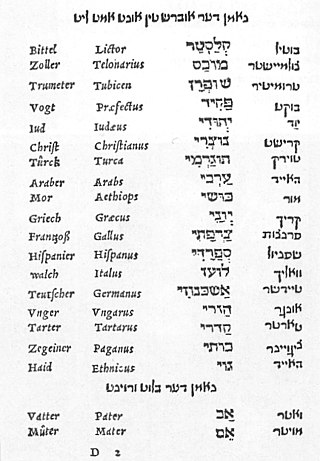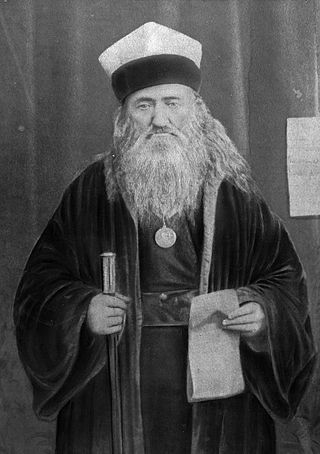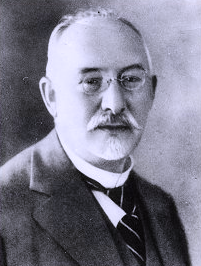
Rabbinic literature, in its broadest sense, is the entire spectrum of rabbinic writings throughout Jewish history. However, the term often refers specifically to literature from the Talmudic era, as opposed to medieval and modern rabbinic writings, and thus corresponds with the Hebrew term Sifrut Chazal. This more specific sense of "Rabbinic literature"—referring to the Talmudim, Midrashim, and related writings, but hardly ever to later texts—is how the term is generally intended when used in contemporary academic writing. The terms mefareshim and parshanim (commentaries/commentators) almost always refer to later, post-Talmudic writers of rabbinic glosses on Biblical and Talmudic texts.

The Masoretic Text is the authoritative Hebrew and Aramaic text of the 24 books of the Hebrew Bible (Tanakh) in Rabbinic Judaism. The Masoretic Text defines the Jewish canon and its precise letter-text, with its vocalization and accentuation known as the mas'sora. Referring to the Masoretic Text, masorah specifically means the diacritic markings of the text of the Jewish scriptures and the concise marginal notes in manuscripts of the Tanakh which note textual details, usually about the precise spelling of words. It was primarily copied, edited, and distributed by a group of Jews known as the Masoretes between the 7th and 10th centuries of the Common Era (CE). The oldest known complete copy, the Leningrad Codex, dates from the early 11th century CE.
The Association of Jewish Libraries (AJL) is an international organization dedicated to the production, collection, organization and dissemination of Judaic resources as a library, media, and information service. AJL has members in the United States, Canada, Israel and over 22 other countries.
Jewish studies is an academic discipline centered on the study of Jews and Judaism. Jewish studies is interdisciplinary and combines aspects of history, Middle Eastern studies, Asian studies, Oriental studies, religious studies, archeology, sociology, languages, political science, area studies, women's studies, and ethnic studies. Jewish studies as a distinct field is mainly present at colleges and universities in North America.

David Kimhi (1160–1235), also known by the Hebrew acronym as the RaDaK (רַדָּ״ק), was a medieval rabbi, biblical commentator, philosopher, and grammarian.

Elia Levita, also known as Elijah Levita, Elias Levita, Élie Lévita, Elia Levita Ashkenazi, Eliahu Levita, Eliyahu haBahur, Elye Bokher, was a Renaissance Hebrew grammarian, scholar, and poet. He was the author of the Bovo-Bukh, the most popular chivalric romance written in Yiddish. Living for a decade in the house of Cardinal Giles of Viterbo, he was one of the foremost teachers of Christian clergy, nobility, and intellectuals in Hebrew and in Jewish mysticism during the Renaissance.

Abraham (Avraham) ben Samuel Firkovich was a famous Karaite writer and archaeologist, collector of ancient manuscripts, and a Karaite Hakham. He was born in Lutsk, Volhynia, then lived in Lithuania, and finally settled in Çufut Qale, Crimea, where he also died. Gabriel Firkovich of Troki was his son-in-law.
Joseph Saul Nathansohn (1808–1875) was a Polish rabbi and posek, and a leading rabbinical authority of his day.
The Jewish Public Library or JPL is a public library in Montreal, Quebec, Canada, founded in 1914. The library contains the largest circulating collection of Judaica in North America. The JPL has close to 4000 members, and receives 700 to 800 visitors weekly. A constituent agency of Federation CJA, the Jewish Public Library is independent of the Montreal Public Libraries Network and instead receives its funding from the city's Jewish community, membership fees, donations and endowments.
Abraham Aharon Price was a renowned Torah scholar, writer, educator, and a community leader in Toronto, Ontario, Canada. He was one of the city's most influential rabbinic figures.

The National Library of Israel, formerly Jewish National and University Library, is the library dedicated to collecting the cultural treasures of Israel and of Jewish heritage. The library holds more than 5 million books, and is located in the Government complex near the Knesset.
Yosef Goldman was a scholar of American Jewish history and the co-author of the two-volume reference work, Hebrew Printing in America 1735-1926: A History and Annotated Bibliography (2006). This work is usually cited by auctioneers and rare-book dealers. His collection of early American Judaica and Hebraica is said to be one of the most comprehensive in the world.
Jewish commentaries on the Bible are biblical commentaries of the Hebrew Bible from a Jewish perspective. Translations into Aramaic and English, and some universally accepted Jewish commentaries with notes on their method of approach and also some modern translations into English with notes are listed.

Yeshivat Har Etzion, commonly known in English as "Gush" and in Hebrew as "Yeshivat HaGush", is a hesder yeshiva located in Alon Shvut, in Israel in Gush Etzion. It is considered one of the leading institutions of advanced Torah study in the world and with a student body of roughly 480, it is one of the largest hesder yeshivot in the West Bank.
Bible translations into Hebrew primarily refers to translations of the New Testament of the Christian Bible into the Hebrew language, from the original Koine Greek or an intermediate translation. There is less need to translate the Jewish Tanakh from the Original Biblical Hebrew, because it is closely intelligible to Modern Hebrew speakers. There are more translations of the small number of Tanakhas passages preserved in the more distantly related biblical Aramaic language. There are also Hebrew translations of Biblical apocrypha.

The Isser and Rae Price Library of Judaica within the University of Florida Libraries' Special & Area Studies Collections supports the teaching and research missions of the Center for Jewish Studies and the University of Florida. The Isser and Rae Price Library of Judaica currently holds over 100,000 circulating volumes. The main library is located on the first floor of Library West. The Judaica special collections are held in the Judaica Suite in Smathers Library (East).

Aron Freimann was a German librarian and historian. He was the son of Israel Meïr Freimann, and grandson, on his mother's side, of the chief rabbi of Altona, Jacob Ettlinger. He attended the Royal Gymnasium of Ostrowo and in 1893 entered the University of Berlin, where he studied history and Oriental languages, devoting himself at the same time to the study of archival and library systems. Parallelly he took courses at the Rabbinical Seminary at Berlin.

The Hill Museum & Manuscript Library (HMML) is a nonprofit organization that photographs, catalogs, and provides free access to collections of manuscripts located in libraries around the world.

The Bibliotheca Rosenthaliana is the Jewish cultural and historical collection of the University of Amsterdam Special Collections. The foundation of the collection is the personal library of Leeser Rosenthal, whose heirs presented the collection as a gift to the city of Amsterdam in 1880. In 1877 the city library had become the University Library, so the Bibliotheca Rosenthaliana was essentially given to the University. The Bibliotheca Rosenthaliana has since expanded to become the largest collection of its kind in Continental Europe, featuring manuscripts, early printed books, broadsides, ephemera, archives, prints, drawings, newspapers, magazines, journals, and reference books.
The Friedberg Geniza Project (FGP) is a digital preservation project, one of the primary goals of which is to computerize the entire world of Cairo Genizah manuscripts - images, identifications, catalogs, copies, joins, and bibliographic references.










